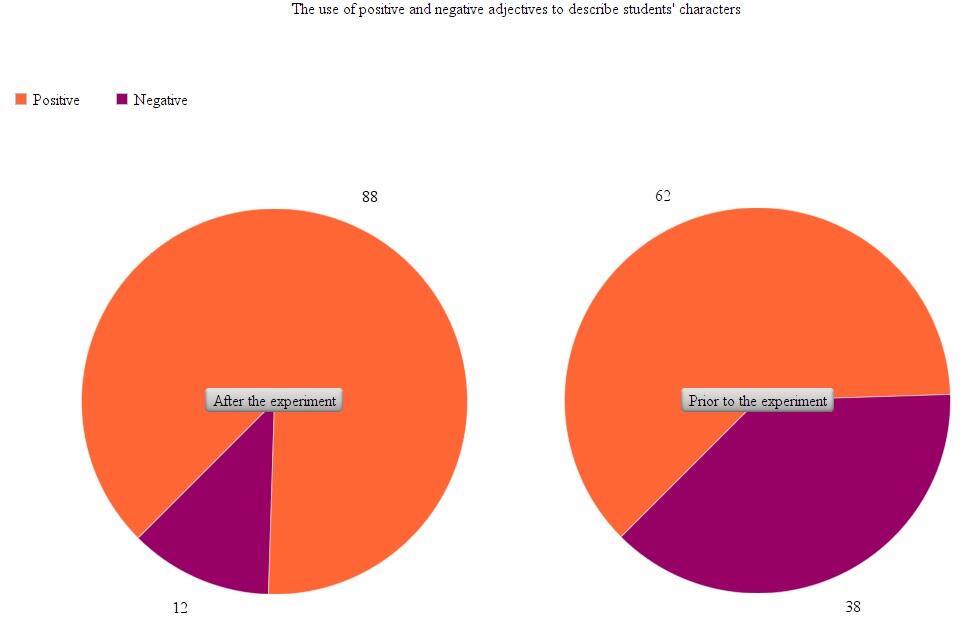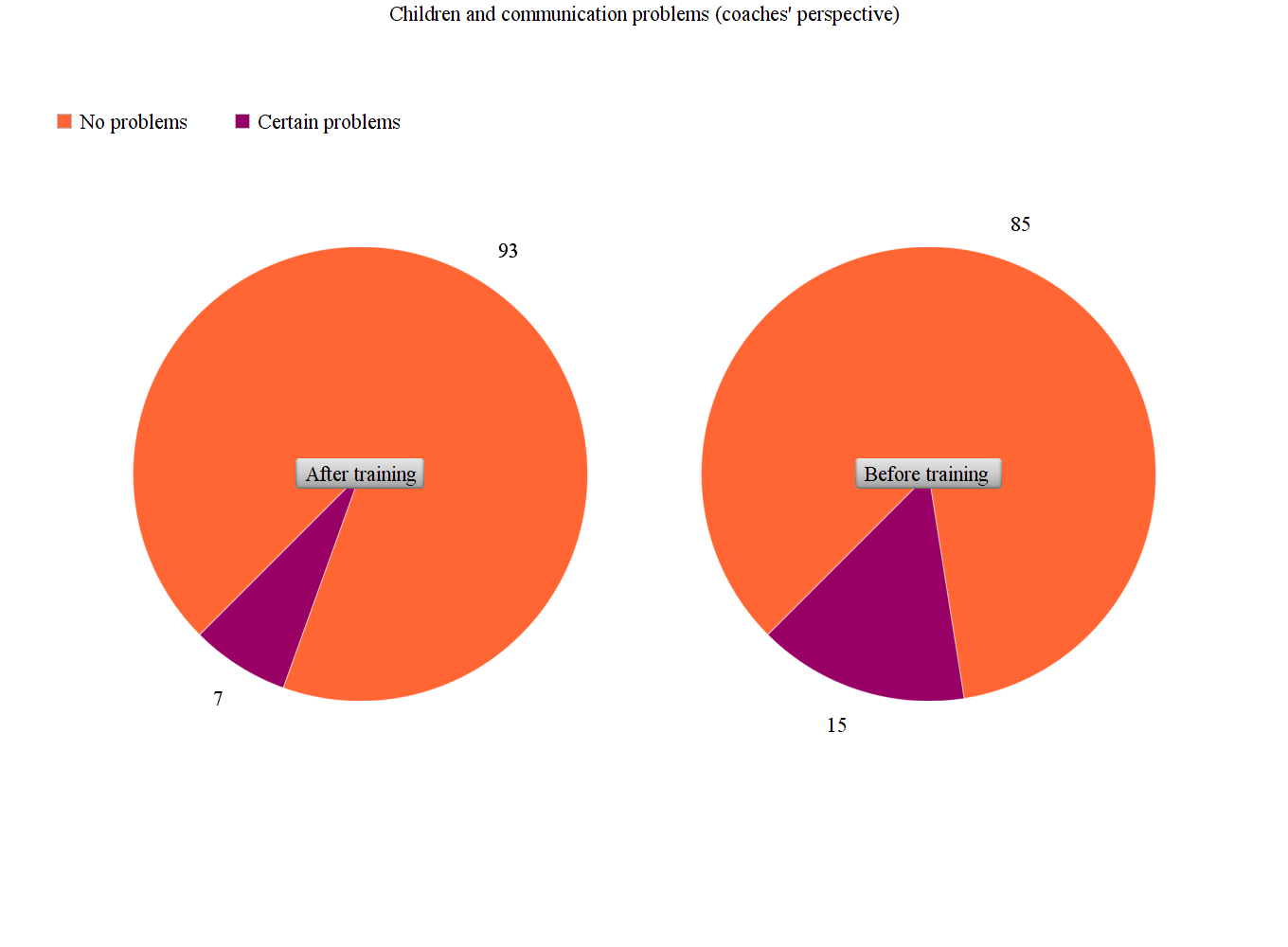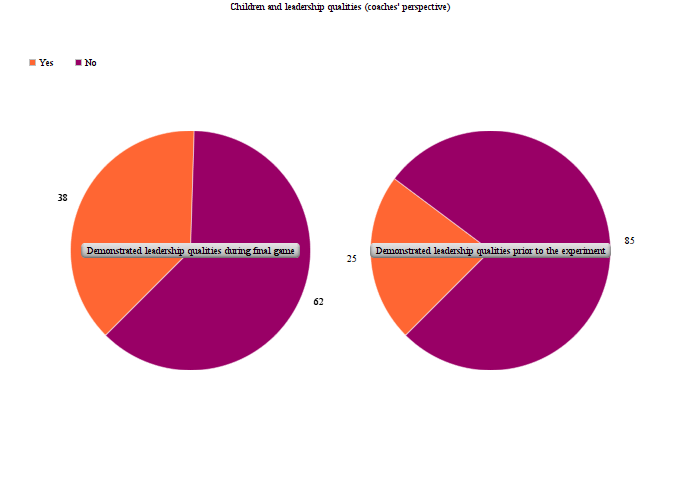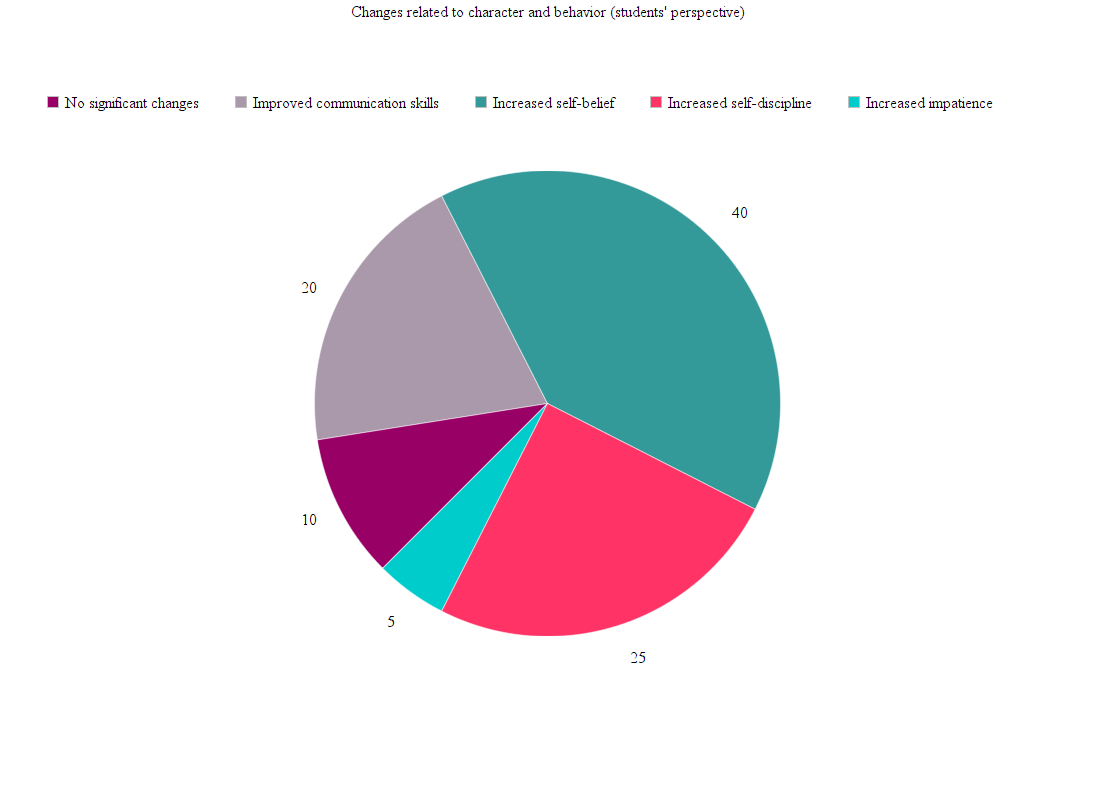Establish parameters for the decision-making process. How will the decision be made (consensus, vote, etc)?
The process of decision-making remains crucial to any project that is aimed at making positive changes to the learning environment and increasing people’s awareness of problems that often remain unnoticed or are underestimated. Within the frame of the project, the process of character development and the way that it can be impacted by the presence of regular physical exercise and the necessity to deal with interpersonal conflicts to become an effective member of a sports team were studied.
To ensure that the decision-making process related to the project is able to bring positive results and contribute to the knowledge in the field, it is pivotal to set the key parameters that will make the process more effective. In order to make an effective decision that will involve the opportunity to improve the current sports education strategy used in the district, it is extremely important to include the following steps:
- Define the particular goal that the decision is supposed to fulfill (in the given case, the decision-making process is aimed at summarizing the key tendencies, indicating the connection between character development and the presence of regular physical exercise);
- Evaluate the data collected with the help of the survey and define the perspective (the research paper under consideration includes analyzing the results, giving the pride of place to the perceptions and opinions of coaches who are more objective and independent);
- Describe the importance of the chosen perspective, using the results of previous researchers in the field (the necessity to look at the problem of character formation through sports from the perspective of coaches instead of focusing on parents’ and students’ opinions);
- Compare the results of self-assessment reported by students with the results reported by their coaches in order to find the most important similarities and differences between them and make a final decision.
When it comes to the perspective that has been chosen for the research paper under consideration, special attention is to be given to the key features that make professional coaches different from the participants’ parents or the participants themselves. Among the reasons that encouraged the researcher to include coaches in the representative group, there is the impact of the current state of knowledge on their work. The lack of knowledge related to the interplay between youth sports and character development can reduce interest in sports activities demonstrated by children and adolescents who would like sports to have a positive impact in terms of physical and psychological health. In other words, there are children who would like to use sports activities as a method of character improvement, involving positive results for their physical health and making them more mature in terms of behavior, emotions, and interpersonal communication. Also, the presence of gender stereotypes can limit children’s opportunities to choose sports activities that they like (Chalabaev et al. 136). Nevertheless, as there is a knowledge gap, coaches are unable to give recommendations based on evidence and research results. Unfortunately, the interest of parents in choosing sports clubs for their children to increase their chances of success in the future may decrease due to a lack of research. Children can also demonstrate a decreased interest in sports education as they see sports as useless muscle loading (Kondakov et al. 22). The immediate consequences of this tendency for coaches and other professionals in sports education are rather negative. In fact, many kinds of sports whose positive contribution to character development has not been proved can lose popularity.
Continuing on the topic of reasons that justify the use of the chosen perspective, it is important to note that focusing on coaches’ opinions involves a lot of advantages that improve the credibility of survey results. Assessing the results of the survey based on parents’ answers would be an extremely difficult task due to the presence of stereotypes and biases that would encourage parents to overestimate or underestimate the success of their children. In fact, adults who had communication problems at school are likely to transfer their dreams of being popular among peers onto their children, and it becomes the primary reason why they want their children to attend sports classes on a regular basis (Brummelman et al. 1). Another factor related to parents’ lack of objectivity lies in the tendency to associate themselves with their children and idealize them (Correa et al. 1291).
Seeing their children as a continuation of themselves, many parents tend to overstate their children’s talents and pay almost no attention to their weaknesses that other people may notice, and the existence of this tendency is supported by modern researchers (Johnston et al. 52). Unlike parents, coaches who were included in the representative group were not interested in overestimating or underestimating children due to the fact that they knew that their anonymity was protected. All children were provided with unique random codes as four surveys concerning each child needed to be gathered together. Also, it is pivotal to note that coaches and children got to know each other only prior to the experiment that was conducted. Each coach had to train two children (there were ten coaches and twenty children), and coaches were unable to choose students based on their own preferences. Instead, a random number generator was used to assign coaches.
Gather information and establish criteria or standards against which to measure possible solutions
Having analyzed the results of the survey, the researcher is to evaluate the results and define the extent to which they would help to achieve the stated goals and support the values accepted by the community. Prior to completing the step under consideration, it is pivotal to set criteria or standards against which possible solutions will be measured. The previous part of the research paper pays focused attention to particular groups impacted by the present state of knowledge concerning the interconnection between youth sports and character development. Apart from children and adolescents themselves (the impact that the knowledge gap has on them is rather evident), the representative group included coaches. The necessity to give consideration to the opinions and observations related to the participants’ character development can be listed among the key components of the decision-making process.
Within the frame of the research, the character development of each of the twenty participants was assessed with the help of four surveys (both students and coaches completed two surveys). The given chapter of the research paper presents the most interesting tendencies that were identified during the survey analysis and sets criteria that will be used to evaluate and discuss results.
A. The first question that students and coaches needed to answer was related to the adjectives associated with children. The chart below shows the results that indicate the tendency to use positive and negative adjectives to describe students. The chart is based only on the analysis of surveys filled in by students (coaches were always positive when answering this question). As the results indicate, the majority of children were more likely to perceive themselves in a negative way prior to the experiment (see Fig. 1). Thus, it can be supposed that sports activities make students more self-assured and positive.

B. The next tendency that needs to be included is related to the perceived number of participants who have communication problems. Prior to the experiment, coaches were given a list of signs that could indicate the presence of communication problems; for instance, they included a lack of empathy, the inability to receive constructive criticism, etc. According to coaches, the manifestation of these problems in children decreased after four months of training (see Fig. 2). In general, this tendency indicates the positive impact of sports on socio-environmental adaptation.

C. Another important tendency relates to the manifestation of leadership qualities (such as responsibility, motivation, and the ability to be flexible under constantly changing conditions) during the final game that was preceded by four months of training (Cotterill and Fransen 120). As is clear from coaches’ answers, about 25% of children demonstrated leadership qualities prior to the experiment (see Fig. 3). This number increased during the final game, and many coaches confirm that the intensive training program helped to make students more motivated, goal-oriented, and flexible.

D. Aggressiveness is regarded as one of the negative consequences of regular sports training, but the given research indicates that the average level of aggressiveness did not increase significantly. Moreover, aggressiveness is seen as a pivotal component of sports culture (Naylor and Yeager 213). Prior to the experiment, about 40% of children were seen as aggressive due to different reasons. Many coaches indicate that their students’ aggressiveness decreased – students became friendlier in everyday life, but they could demonstrate the so-called “passion to win” during the final game.
E. When asked about significant changes related to their character and behavior, the majority of students indicated the presence of positive changes related to their character and behavior. Students were expected to single out one key change, either positive or negative, and their answers were summarized. The majority of students indicated that their self-confidence had increased due to the experiment (see Fig. 4). Other popular answers include improvements related to self-discipline and communication skills. At the same time, some students indicated negative changes (impatience) or the absence of significant changes.

Criteria or standards that will allow analyzing the retrieved results include the degree to which they correspond with the findings of previous researchers and their expected practical usefulness. The final decision related to the research project under consideration should allow the researcher to answer a few questions. To begin with, the survey results should help the researcher to make evidence-based conclusions concerning the key tendencies that indicate the impact of regular physical training on the character development of adolescents. Apart from that, the analysis and summary of survey results are expected to define whether the retrieved results can provide the basis for a new sports education strategy that will help to improve children’s physical and mental health at the same time. In particular, the creation of such a strategy would allow using psychological testing in order to define children’s weaknesses and potential areas of development (such as improving self-awareness, becoming more independent, overcoming their own laziness, conquering their fears, or making their personalities more competitive).
The key tendencies identified during the research are to be compared with the findings indicated by other researchers. When it comes to the key findings related to the topic, it needs to be said that the opinions of researchers are quite different; for instance, the research group headed by Rees was unable to find any connection between sports and character development (Huang and Hong 2). Also, some studies report that there are no individual benefits for athletes related to character. In other words, other researchers’ results demonstrate that high school athletics participation does not guarantee future success related to education and career development (Ransom and Ransom 2). The difference between the findings of the research under consideration and other studies can be attributed to the fact that the latter measure long-term outcomes of sports participation and pay little attention to subjective statements of adolescents concerning their character development and the opinions of their coaches who often see the potential in people and can motivate them.
Generate alternate solutions
Can solutions be supported by research and effective practices?
As is clear from the results of the survey analysis, the majority of students indicate that the experiment has helped them to reduce certain problems related to character development that are quite common in children and adolescents. Among these problems, there is the inability to communicate with other people in an effective manner and take their opinions into account, a lack of self-belief that often makes people unmotivated, and problems related to self-discipline. The alternate solution that can help students at schools to become more prepared to live after school and improve their character involves the creation of a new approach to sports education. The approach will be based on the use of psychological testing to choose sports sections. Students will be able to indicate weaknesses that they would like to conquer with the help of sports or their personal barriers to successful character development will be identified by psychologists. Based on this information, students will be provided with individual recommendations concerning the kinds of sports that can be helpful to them.
In terms of research and effective practices that support the solution, it needs to be said that similar tests present entertaining content and the recommendations are not based on scientific knowledge (Which Sport Are You Made for? Take Our 60-Second Test). Nevertheless, further research can be conducted to establish links between different sports that can be played by school students. The given research focuses on basketball, and the results indicate that basketball training has helped the participants to become more self-assured and improve their communication skills. Having defined the particular traits that can be developed through other kinds of sports, modern researchers will be able to design one strategy that will help children with different problems to become more mature and successful. There is a lack of information concerning the use of such strategies, but they will be extremely effective for society as a whole.
Do solutions support the district’s vision and goals?
The vision of the school system is inextricably connected with using any resources to contribute to the future success of students. The key goals that the school system pursues include preparing all children for further education and providing the conditions to make new generations more successful and goal-oriented. The alternate solution discussed in the paper fully supports the district’s vision and goals as it is aimed at contributing to the success of every single student with the help of sports.
How do solutions impact the district curriculum, policies, other schools, departments, etc?
The solution under consideration would have an impact on the district curriculum and policies. In fact, the use of the approach including psychological testing to choose sports classes would involve introducing changes to the curriculum to provide children with the opportunity to play at least seven kinds of sport. Children would not be urged to attend only those classes listed in the recommendations. Instead, these recommendations would be used to guide only those children who do not have specific preferences concerning sports activities. The strategy is expected to have a positive impact on the curriculum as the majority of children will be able to improve their communication skills. Therefore, teachers will have to spend less time explaining to children how to work in a team. Children will be able to use their experience related to sports in order to work in a more effective manner in academic settings.
Show how solutions are better than current practices
Nowadays, the school system does not use any specific practices to facilitate positive character development with the help of physical exercise, and the implementation of the discussed solution (that would require additional research) is expected to produce positive changes. To begin with, the absence of an individual approach to the choice of the most appropriate sports clubs leaves students’ specific problems related to character development unnoticed. In addition, practices aimed at positive character formation help coaches and teachers to prepare students for college and work. Encouraging students to discuss their weaknesses and search for ways to overcome them becomes the key task of a new sports education strategy. The latter allows turning children into self-conscious citizens who know a lot about their potential and are able to achieve success in the global world and contribute to the well-being of their nation.
Works Cited
Brummelman, Eddie, et al. “My Child Redeems My Broken Dreams: On Parents Transferring Their Unfulfilled Ambitions Onto Their Child.” PloS ONE, vol. 8, no. 6, 2013, pp. 1-4.
Chalabaev, Aïna, et al. “The Influence of Sex Stereotypes and Gender Roles on Participation and Performance in Sport and Exercise: Review and Future Directions.” Psychology of Sport and Exercise, vol. 14, no. 2, 2013, pp. 136-144.
Correa, Wesley, et al. “Risk Factors for Development of Children with Down Syndrome in Brazil.” Creative Education, vol. 6, no. 12, 2015, pp. 1285-1293.
Cotterill, Stewart T., and Katrien Fransen. “Athlete Leadership in Sport Teams: Current Understanding and Future Directions.” International Review of Sport and Exercise Psychology, vol. 9, no. 1, 2016, pp. 116-133.
Huang, Sean, and Shane Hong. “Effectiveness of Character and Leadership Development through Sport using Game for Life Framework.” Sports Singapore, 2016, pp. 1-12.
Johnston, Charlotte, et al. “Mothers’ Implicit and Explicit Attitudes and Attributions in Relation to Self-Reported Parenting Behavior.” Parenting, vol. 17, no. 1, 2017, pp. 51-72.
Kondakov, Victor, et al. “Causes of Declining Interest of Students to Employment Physical Education and Sports.” Physical Education of Students, vol. 19, no. 1, 2015, pp. 22-30.
Naylor, Adam H., and John M. Yeager. “A 21st-Century Framework for Character Formation in Sports.” Peabody Journal of Education, vol. 88, no. 2, 2013, pp. 212-224.
Ransom, Michael R., and Tyler Ransom. “Do High School Sports Build or Reveal Character?” Institute for the Study of Labor: Discussion Paper Series, no. 11110, 2017, pp. 2-20.
“Which Sport Are You Made for? Take Our 60-Second Test.”BBC, Web.